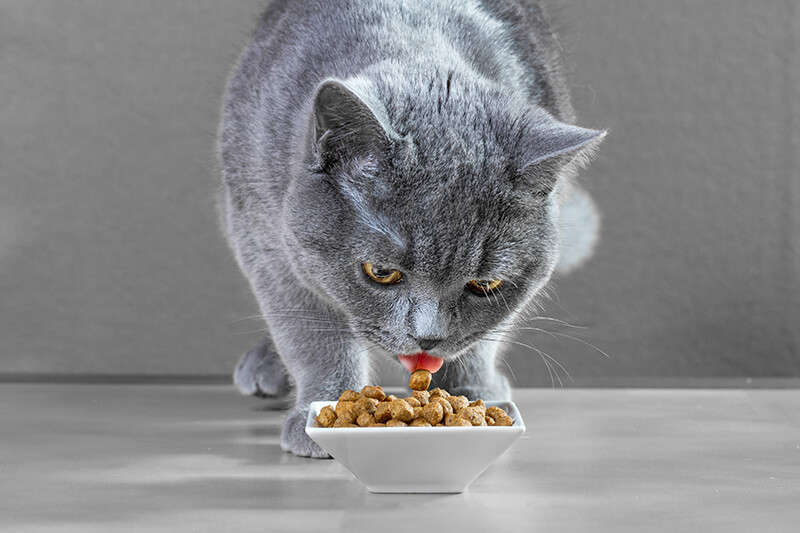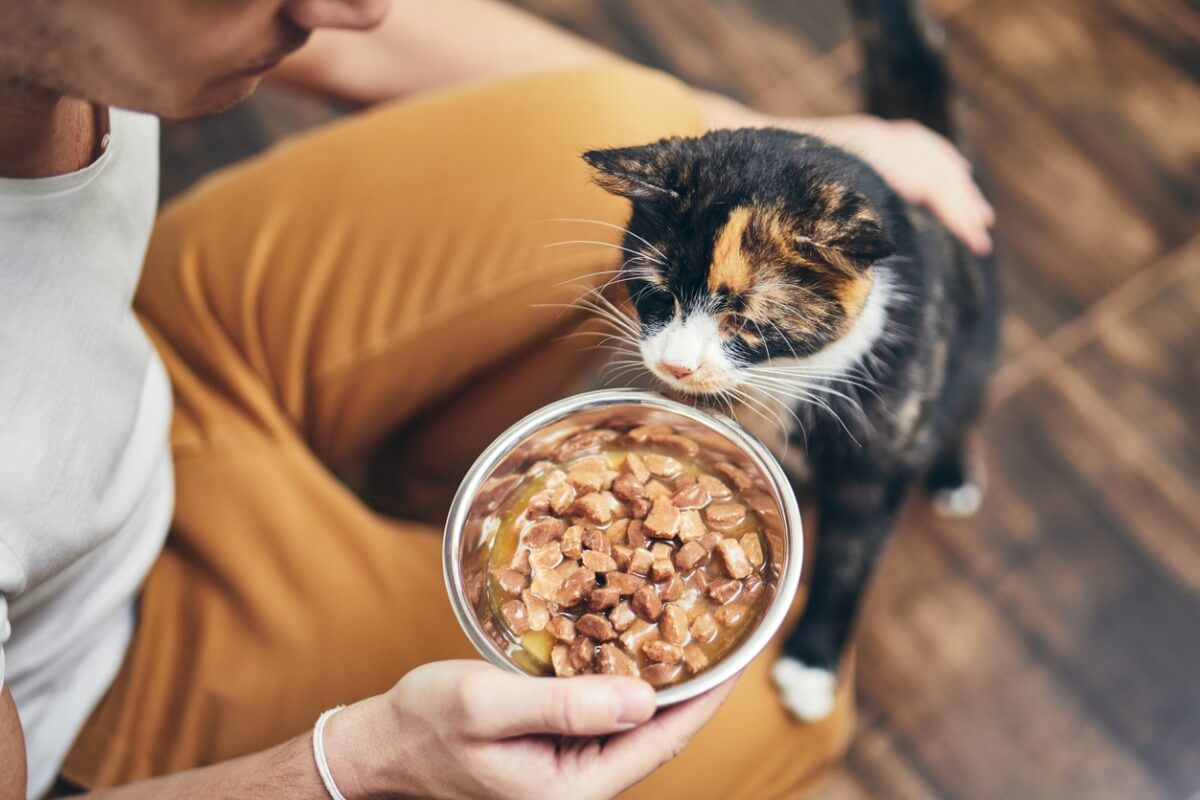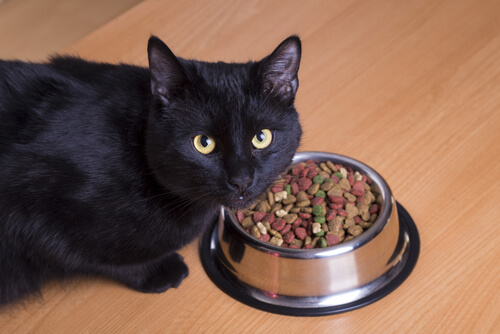How to Change Your Cat’s Food?
It is possible to change your cat's food without causing stress or anorexia. Let's see how it's done.

If you need to change your cat’s food, it’s a more complex process than it may first seem. Especially, on many occasions, because these changes are often the result of health problems and other physical conditions. In addition, many domestic cats don’t get along well with changes in their environment, and even less so when it has to do with their food.
How to do it, then? The truth is that there’s only one way: little by little. To make this transition as smooth as possible for you and your cat, here are a series of tips and steps to make it happen. Let’s get to it.
When is it necessary to change your cat’s food?
If you’ve had your cat since it was a kitten, you’ve probably already had to change its food. The nutritional needs of animals change, at least with age. You’ll need a different formulation for kittens, for adults, and for older animals.
Health reasons are another of the main reasons for having to change a cat’s food. Whether due to sterilization, obesity, kidney problems, diabetes, or other factors, your feline friend may need food adapted to their specific needs at a particular time in their life.
Even though these are the two main reasons, there are many others that would require a readjustment in the cat’s food and diet. They may need the inclusion of food supplements or wet food, for example. This is also a deviation from the routine for your pet and must be managed.

How to change your cat’s food effectively?
All the reasons you have just read are legitimate reasons to make a change in your cat’s diet; they’re designed to improve or maintain its quality of life. However, the animal isn’t aware of these needs and, if it’s very attached to its routine, finding something unusual in the feeder could be a source of stress. How to do it, then? Let’s take a look at the steps required.
Both for stress and gastrointestinal disorders that may arise, you should never change an animal’s food abruptly.
Consult your veterinarian
Although it’s likely that an expert has told you that you need to change your cat’s food, never forget to consult them if you decide to do it on your own. They can make a profile of your pet’s nutritional needs and design a diet according to them.
In this way, possible physical illnesses that could influence the animal’s health during the new diet are detected and ruled out.
Steps to change their food gradually
Routine makes pets feel secure, especially dogs and cats. Therefore, changing their food requires a series of steps to make the transition as smooth as possible, and without stress.
This change can be carried out by managing the percentages of their old and new food. The old feed will be reduced as the new feed is introduced. To give you an idea, this would be an example:
- Days 1 and 2: 90% of usual feed, 10% of the new feed.
- Days 3 and 4: 75% of old feed, 25% of the new feed.
- 5th and 6th day: Equal parts of both feeds.
- 7th and 8th day: we lower the old feed to 25% and raise the new feed to 75%.
- From the ninth day: we finally give only the new food to our cat and remove all the old type.
Assuming that this whole process hasn’t caused any health problems for the animal and that it’s being well tolerated, all that remains is to monitor it for a few more days. Otherwise, you should contact your veterinarian to readjust this new food.
Additional tips for changing your cat’s food

It’s possible that your cat may refuse food during this transition. If this happens, don’t despair at the first attempt, as there are several strategies you can apply. From slightly warming the dish to adding some wet food, increasing the palatability of feline food is relatively easy.
Remember that if you add a treat to get your cat to finish his new food, you’ll have to gradually remove it as well.
Some cats are highly selective about their food. In these cases, the 10-day transition may have to take a few more days, and the increase in the percentage of the new food slower. If the task is becoming impossible, consult your veterinarian.
And, above all, don’t let any sign of discomfort continue without consulting your vet. Vomiting, diarrhea, abnormal stools, and behavioral changes are all causes for alarm if you’re changing your cat’s food. In these cases, stop the transition and go for a consultation.
Conclusions
The key to this change is patience. Changing a cat’s food isn’t always an easy job, as you have seen. Anything that increases the quality of your cat’s life is worth trying, but remember that your cat needs to adapt to this too.

